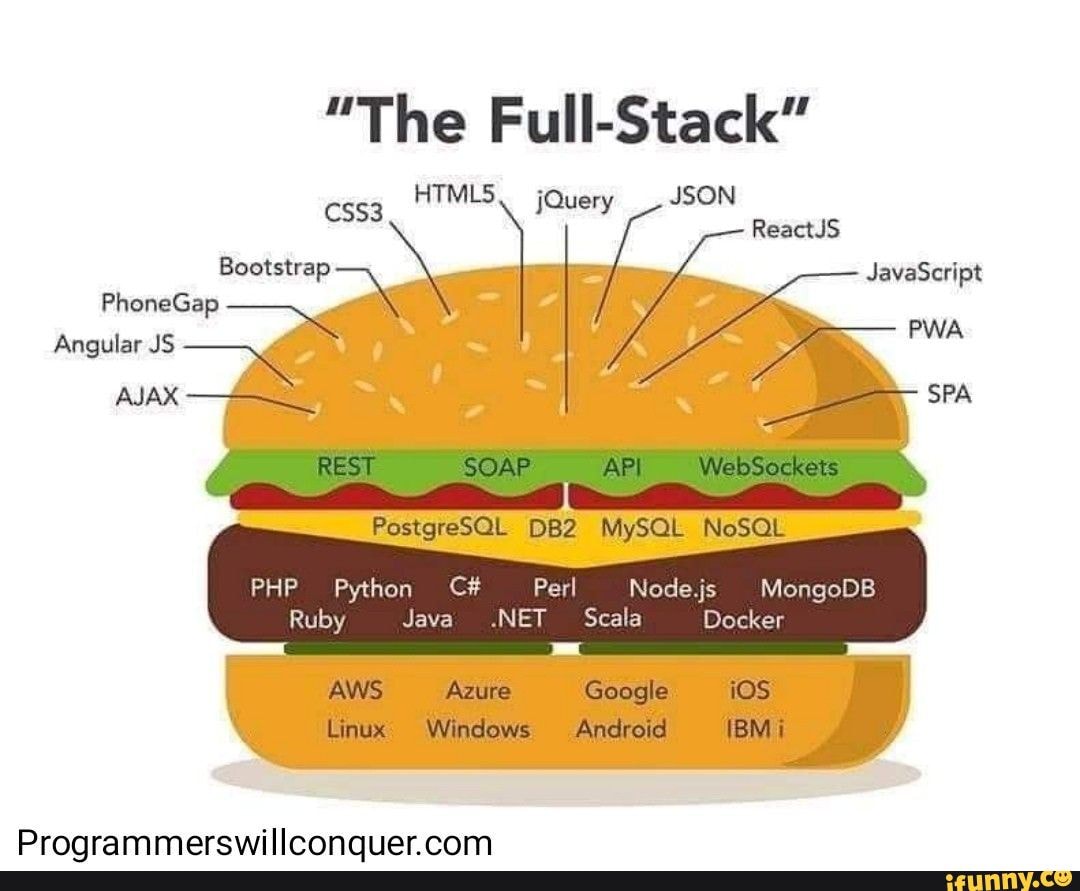Which framework should I learn: Django or Node.js? Why?
Are you a novice web developer in search of ideal programming platforms to acquire? Are you torn between Django and Node.js as your next learning destination? Or perhaps you’re still unsure which one of these popular technologies would fit well into your goals? This article is crafted just for you.
There has been an ongoing discourse over which between Django, a high-level Python Web framework, and Node.js, a Javascript runtime environment, is superior. Top-notch tech establishments like Mozilla and Stack Overflow have confirmed that most developers are divided by this dilemma. With these two platforms continuing to increase in importance in the world of web applications, the need to differentiate between their key functionalities, effectiveness, and application has become crucial. Moreover, this distinction would lead towards a better understanding of which skills would likely be of greater value in the developer’s evolving career path.
In this article you will get an insight into these two powerful programming frameworks- Django and Node.js. We shall delve into their individual backgrounds, core functionalities, significant benefits and potential drawbacks. Furthermore, we shall provide succinct comparisons in terms of performance, scalability and learning curve, to assist you in making a sound choice.
Additionally, throughout this discourse, we shall utilize expert insights and case scenarios to demonstrate the application of these frameworks in diverse contexts. This article aims to equip you with the necessary insights to decide which web development tool, Django or Node.js, you should learn based on your individual needs.

Understanding Key Definitions: Django and Node.js
Django is a high-level Python web framework that fosters rapid development and pragmatic, clean design. It’s geared towards developers who want a robust, flexible, and scalable solution for building web applications. Python, the language Django is based on, is straightforward and easy to learn, making Django a suitable choice for beginners in web development.
Node.js is a cross-platform, open-source runtime environment that uses JavaScript to build server-side and networking applications. While JavaScript is primarily known for enhancing web pages, Node.js takes it a step further, allowing developers to use the same language for both client-side and server-side scripting. This means you can build and manage a website’s front-end and back-end with a single language.
Decoding Django: Unleashing the Full Potential in Web Development
Understanding Django Framework
Django, an open-source Python Web framework, empowers developers to build robust web applications rapidly and with robust features. Python, being one of the most beginner-friendly programming languages, adds to the appeal of Django. Python’s clean and easy-to-understand syntax makes Django an excellent choice for beginners to start web development. Moreover, Django’s “batteries included” philosophy means that it comes equipped with various functionalities straight out of the box. This helps reduce dependencies on external libraries, thus speeding up the development.
Core Advantages of Django
Some of the most compelling reasons to learn Django include its comprehensiveness, scalability, flexibility, and strong community support. Django, unlike other frameworks, is comprehensive. It doesn’t require the installation of separate libraries or modules to perform critical tasks like database administration, content administration, user authentication and more. Everything comes pre-packaged with Django, thus simplifying the entire process of web development.
Scalability is another feather in Django’s cap. Most of the biggest platforms like Instagram, Mozilla, Pinterest, The Washington Times, etc., use Django because it seamlessly handles traffic surges, thanks to its ability to quickly and flexibly scale.
- Flexibility: Django’s “Don’t Repeat Yourself” principle emphasizes reusing existing code and minimizing redundancy, which leads to a more maintainable and efficient codebase.
- Community support: Django boasts of a strong and active community, resulting in regular updates, vast resources for learning, and quick bug fixes. A supportive community can prove to be immensely helpful, particularly when you’re stuck or when you’re trying to learn the framework.
Benefits Over Learning Node.js
When compared to Node.js, choosing Django narrows down to three primary reasons – Python’s simplicity, comprehensive nature, and the strong community support that Django enjoys. Python is much simpler and faster to learn compared to JavaScript, the language behind Node.js. Consequently, web development with Django becomes a less complicated process for beginners or those transitioning from other programming backgrounds.
Secondly, Node.js is a runtime environment, not a full-fledged framework like Django. It lacks in providing out-of-the-box solutions for many critical tasks, unlike Django. This means you might have to search for separate libraries in Node.js, causing occasional delays in project deadlines.
In conclusion, while both Django and Node.js come with their respective strengths and use-cases, Django has a slight edge due to its simplicity, comprehensiveness, and supportive community. Those considering web development should seriously think about starting with Django.
Django Versus Node.js: A Comprehensive Comparative Study for Future Developers
Determining the Best Route: Django or Node.js?
What could possibly differentiate Django and Node.js significantly enough to influence your decision on which to learn? To elucidate this intricate scenario, it’s vital to grasp the core characteristics and distinctive functions of each. Django, a robust, open-source, Python-based framework appeals for its user-friendliness and the speed at which complex applications can be built. On the other hand, Node.js, a lightweight, efficient, JavaScript runtime, dazzles with its non-blocking, event-driven architecture, making it particularly suitable for data-intensive real-time applications.
Unraveling the Primary Dilemma
The choice between Django and Node.js puts one in somewhat of a pickle discourse. The programming languages they are based on are the first determinant factor. Django leans on Python, universally recognized for its simplicity and readability whereas Node.js swims in the ocean of JavaScript, the omnipresent language of the web, thus greatly expanding its scope and versatility. Your preference and the familiarity with these languages inevitably influences the decision-making process. Scalability and performance are massive considerations as well. While Django underpins fast development, resulting in more time-efficient delivery, Node.js trumps in terms of runtime speed and application performance. Finally, the scope and nature of the project you are embarking on could make the decision for you. Django, with its ‘batteries-included’ philosophy, may be more suited to complex applications with its wealth of features, while Node.js could be an ideal fit for real-time or streaming applications.
Illuminating Best Practices with Informative Examples
To illustrate further, if you are looking to build a real-time chat application, Node.js would likely be your goto choice. Its non-blocking I/O paradigm and the power of websockets allow for efficient, bidirectional communication between the server and the client, crucial aspects for real-time applications. Conversely, Django could be beneficial to your needs if you are creating a content heavy blog site or an eCommerce platform. Django’s Object-Relational Mapping (ORM) system simplifies database operations and the built-in admin interface expedites the creation of content management functionalities. The availability of ready-to-use packages like Django OSCAR eases designing complex eCommerce functionalities as well. Each works best in scenarios where their features can be fully utilized, exemplifying that neither is superior – it solely rests on your project requirements and the comfort with the underlying language.
Node.js Uncover: How It’s Disrupting the Web Development Landscape
Thought-provoking Question: What Sets Node.js Apart?
If you ever wonder which development platform is currently the most in-demand, understand that Node.js has risen to an unparalleled level of popularity among developers worldwide. The key reason typically centers on its impressive simplicity tied with high efficiency, two ingredients that are crucial for any efficient coding process. At its core, Node.js is a runtime environment that allows developers to write server-side scripts in JavaScript. It has enabled developers to use a single programming language for server-side and client-side scripts. This homogeneity notably improves integration between client-side and server-side, which has the power to increase a website’s loading speed. Also, the non-blocking, event-driven architecture of Node.js is ideal for real-time applications such as gaming and chats.
The main issue: Is Node.js Always the Right Choice?
While the unique selling propositions of Node.js explain its growing popularity, it is crucial to understand the problem when it is not the best fit. Node.js is not ideal when your application involves heavy server-side computation. Tasks like generating complex graphics on the server-side or handling long mathematical calculations can bog Node.js down, since JavaScript isn’t designed for heavy computing. Another downside is that writing database queries in JavaScript can be quite cumbersome and error-prone, and requires extra caution when dealing with SQL databases. However, with the right strategy and application design, these issues can be minimized, if not completely resolved.
Mastering Node.js: Harnessing the Power through Best Practices
When it comes down to it, learning Node.js means mastering its particular set of best practices. One of the most important tips is to avoid blocking the event loop since Node.js is single-threaded. To handle I/O-bound tasks, developers should always use asynchronous APIs available in a Node.js library, which helps maintain the application’s concurrency. Another best practice is using tools like PM2 for process monitoring and keeping the Node.js applications alive forever. PM2 also aids in managing the application logs and gives insights about loop latency and heap usage, useful for optimizing and debugging Node.js code. It is also instructive to learn how to handle errors properly in node.js, always opting for asynchronous error handling rather than ‘try…catch’. With the right understanding and implementation of these best practices, Node.js can truly become an asset within your development arsenal. As a developer, diving into the Node.js environment opens up several doors for production improvement, coding efficiency, and creative freedom. Therefore, it’s worth exploring what this notable JavaScript environment has to offer.
Conclusion
Envisioning your own path in the vast landscape of web development, should one embrace Django or should one choose Node.js instead? Both frameworks come with their own unique strengths and drawbacks. Ultimately, the choice is greatly influenced by your project’s needs and your personal coding preferences. Django’s structured approach and its Python roots may be enticing to certain developers, while Node.js could be attractive due to its event-driven model and the ability of coding in JavaScript for both the client and server-side.
As you mull over this important decision, we invite you to engage further with our blog community. Check out the wealth of information we provide here, and join the ranks of our loyal readers by subscribing to our newsletter. We ensure you are always up-to-date with the latest discussions and insights in web technology. Our blog constantly evolves to cater to the needs and curiosity of our readers, shining light on the most complex subjects.
Looking ahead, there’s a lot more in store for you right here. With new articles and series focusing on the wide-ranging aspects of web development being crafted meticulously by our team, we promise enriching content that caters to beginners and experienced developers alike. Stay tuned and continue your exploration with us, as we unravel the fascinating world of web development technologies piece by piece.
F.A.Q.
A1. Node.js is a JavaScript runtime built on Google Chrome’s V8 JavaScript engine, meaning it allows for the development of applications in JavaScript. Django, conversely, is a Python-based high-level web application development framework that encourages rapid and clean development with pragmatic design.
Q2. Is Django easier to learn than Node.js?
A2. Learning curve varies significantly depending on a person’s prior knowledge and experience in programming. However, Python, which Django is based on, is generally considered easier to grasp for beginners than JavaScript, the language of Node.js.
Q3. Which of the two frameworks would be better for developing real-time applications?
A3. If you are planning on building real-time applications like chat applications or games, Node.js would be a better choice. Node.js is known for its efficiency and scalability that makes it perfect for real-time applications.
Q4. What sort of projects is Django more suited for?
A4. Django shines when it comes to developing complex, data-driven websites. It’s integrated with Python, which enables swift processing of data and compatibility with various data analysis libraries and tools.
Q5. Can I use both Django and Node.js in the same project?
A5. Yes, it’s sometimes possible and beneficial to use both in a single project. This is dependent on the project’s complexity and requirements, but utilizing both allows for leveraging the strengths of each framework.








